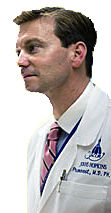Submitted by Dan Keller RN MS on
 I have touted Dr. Atul Gawande and his medical checklists in this blog. But he would be the first to point out that he wasn't the first to apply them to healthcare. That was Dr. Peter Pronovost at Johns Hopkins in 2001. The concept is summarized nicely in this 2009 New York Times article by Robin Henig, A Hospital How-To Guide that Mother Would Love.
I have touted Dr. Atul Gawande and his medical checklists in this blog. But he would be the first to point out that he wasn't the first to apply them to healthcare. That was Dr. Peter Pronovost at Johns Hopkins in 2001. The concept is summarized nicely in this 2009 New York Times article by Robin Henig, A Hospital How-To Guide that Mother Would Love.
However, it was Gawande who applied this method on an international scale, and proved that it works. Henig writes, and quotes from Gawande's Checklist Manfesto:
The study began in the spring of 2008, and the results were startling. Without adding a single piece of equipment or spending an extra dollar, all eight hospitals saw the rate of major postsurgical complications drop by 36 percent in the six months after the checklist was introduced; deaths fell by 47 percent. "In every site, introduction of the checklist had been accompanied by a substantial reduction in complications," he writes. "In seven out of eight, it was a double-digit percentage drop. This thing was real."
The point is that anyone with a complex technical job -- including nurses -- can benefit from this simple intervention. Henig writes:
...the complexities of technology in the 21st century may be best handled by the simplest solution. "We may admit that errors and oversights occur -- even devastating ones," he writes, referring here primarily to his fellow surgeons, a group not known for modesty. "But we believe our jobs are too complicated to reduce to a checklist."
We do so at our own peril or, rather, at the peril of our patients. She concludes:
What a powerful insight this is: In an age of unrelenting technological complexity, where the most basic steps are too easy to overlook and where overlooking even one step can have irremediable consequences, something as primitive as... a to-do list to "get the stupid stuff right" can make a profound difference.
Are nurses victims of the same hubris? NurseMind may well prove otherwise.
- Dan Keller RN MS's blog
- Log in or register to post comments
